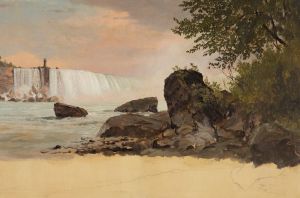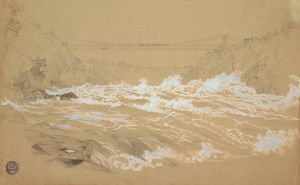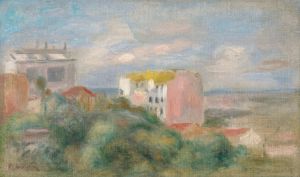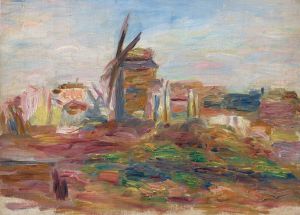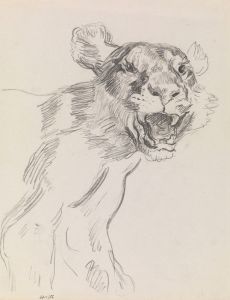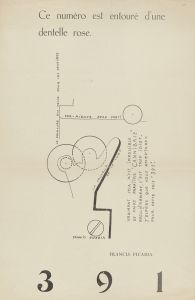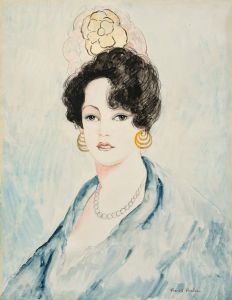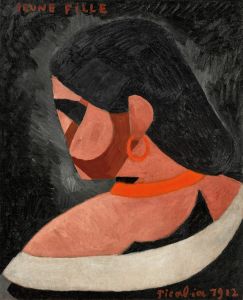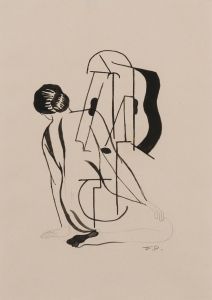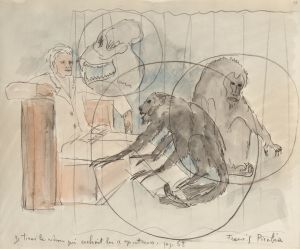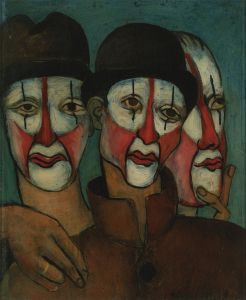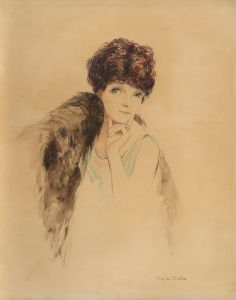
Sans titre
A hand-painted replica of Francis Picabia’s masterpiece Sans titre, meticulously crafted by professional artists to capture the true essence of the original. Each piece is created with museum-quality canvas and rare mineral pigments, carefully painted by experienced artists with delicate brushstrokes and rich, layered colors to perfectly recreate the texture of the original artwork. Unlike machine-printed reproductions, this hand-painted version brings the painting to life, infused with the artist’s emotions and skill in every stroke. Whether for personal collection or home decoration, it instantly elevates the artistic atmosphere of any space.
Francis Picabia, a French avant-garde painter, is known for his diverse artistic styles and contributions to various art movements, including Impressionism, Cubism, Dada, and Surrealism. One of his works, "Sans titre" (which translates to "Untitled" in English), reflects his experimental approach and the fluidity of his artistic expression. While specific details about this particular piece may not be extensively documented, it can be contextualized within Picabia's broader body of work and his influence on modern art.
Francis Picabia was born on January 22, 1879, in Paris, France. He began his artistic career with Impressionist landscapes, but his style evolved significantly over the years. By the early 20th century, Picabia had become associated with Cubism, a movement characterized by fragmented forms and multiple perspectives. His involvement with Cubism, however, was relatively brief, as he soon became a central figure in the Dada movement.
Dada emerged during World War I as a reaction against the perceived senselessness of the war and the traditional values of art and society. It embraced absurdity, chance, and anti-art sentiments. Picabia's work during this period often featured mechanical and abstract forms, reflecting his interest in technology and the mechanization of society. His Dadaist works were marked by their playful and provocative nature, challenging conventional notions of art.
"Sans titre" could potentially belong to any phase of Picabia's career, given his propensity for untitled works and his frequent stylistic shifts. However, without specific information about the piece, it is difficult to ascertain its exact style or period. Picabia's untitled works often leave room for interpretation, inviting viewers to engage with the art without preconceived notions.
In the 1920s, Picabia transitioned into Surrealism, a movement that sought to explore the unconscious mind and dream imagery. His Surrealist works often featured bizarre and fantastical elements, blending reality with imagination. Picabia's ability to adapt and reinvent his style contributed to his reputation as a versatile and innovative artist.
Throughout his career, Picabia was known for his irreverence and willingness to defy artistic conventions. He frequently collaborated with other avant-garde artists and writers, including Marcel Duchamp and André Breton, further cementing his influence on the development of modern art.
Francis Picabia passed away on November 30, 1953, in Paris. His legacy endures through his diverse body of work, which continues to be studied and celebrated for its originality and impact on 20th-century art. While specific information about "Sans titre" may be limited, the piece can be appreciated within the context of Picabia's broader artistic journey and his contributions to various avant-garde movements.
In summary, "Sans titre" by Francis Picabia exemplifies the artist's experimental spirit and his role in shaping modern art. Although details about the painting itself may be scarce, Picabia's influence on the art world is undeniable, and his works continue to inspire and challenge audiences today.





